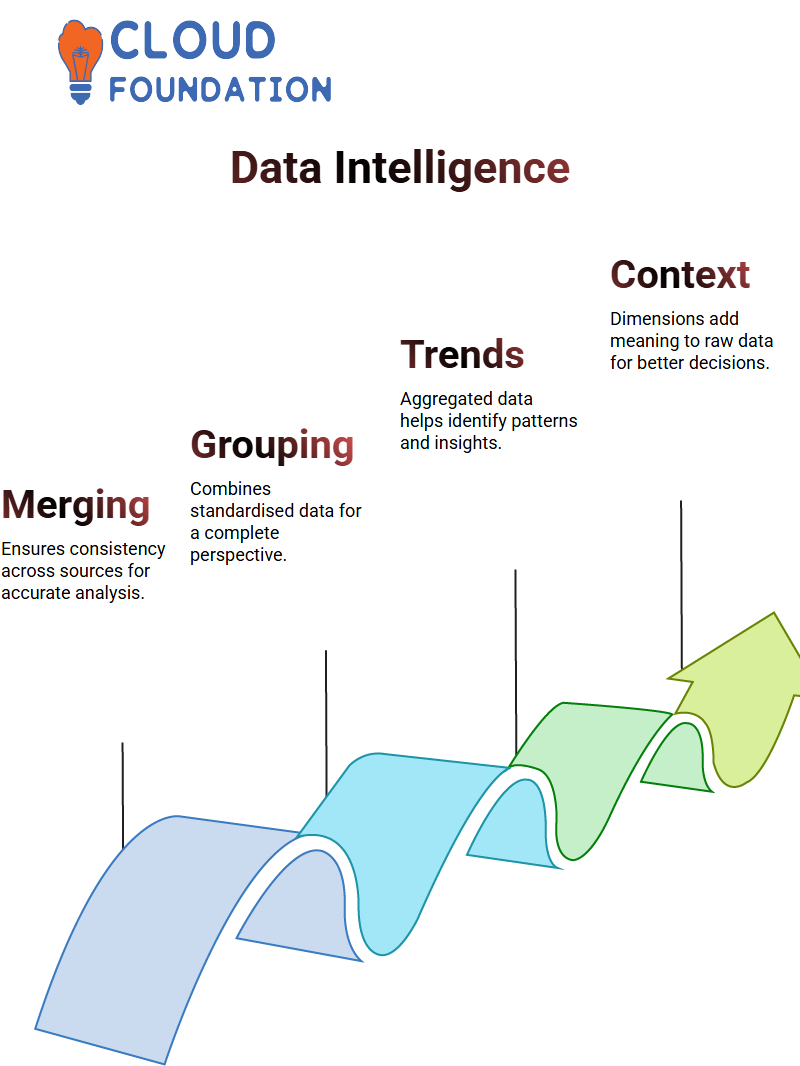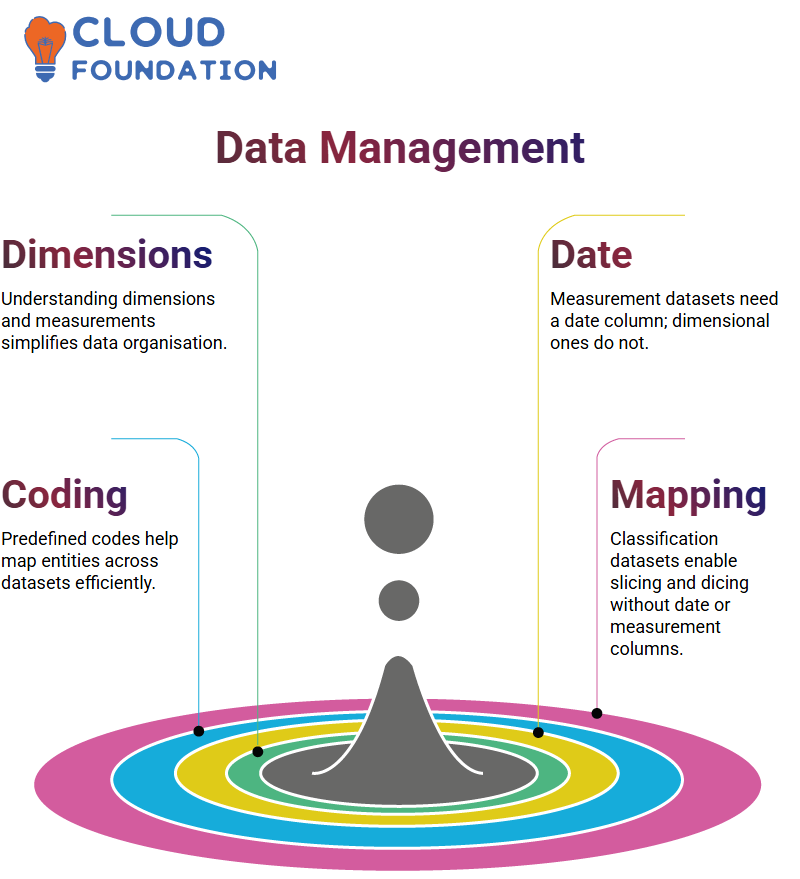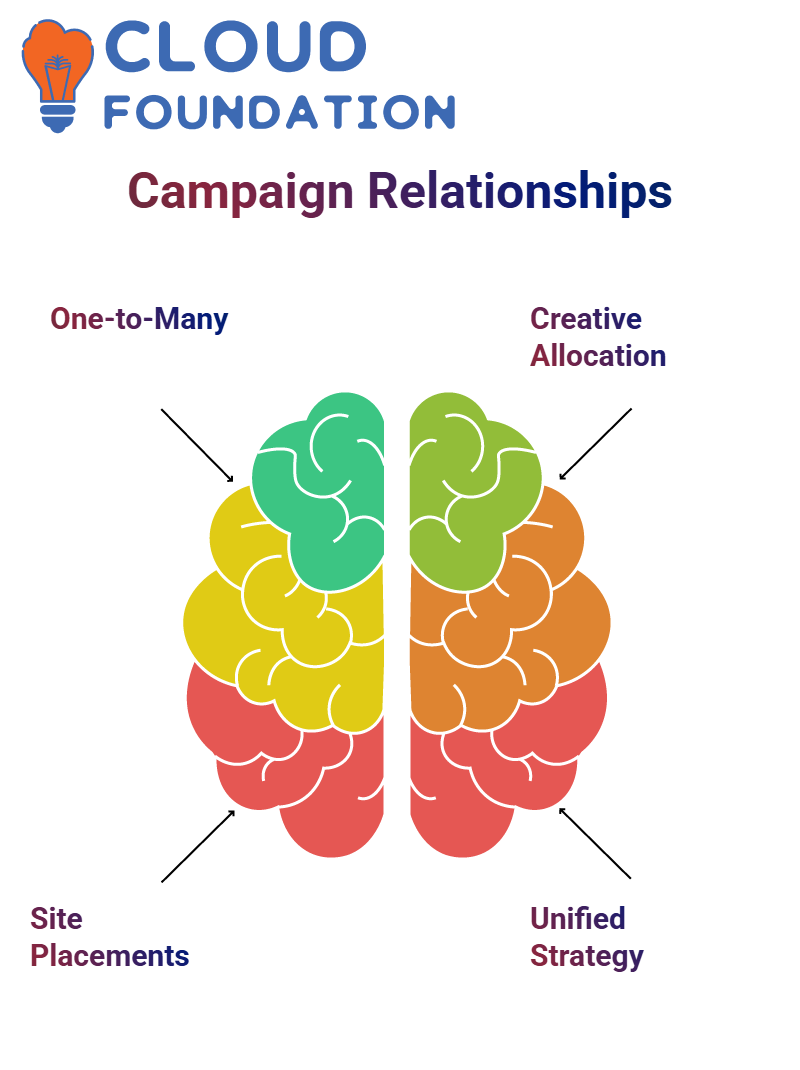Marketing Cloud Intelligence Data Models& Data Structures Tutorial
Understanding Datorama Data Models
Datorama simplifies data structuring for more precise categorisation and deeper insights.
Data models enable us to organise information efficiently and effectively, but understanding the distinction between measurements and dimensions in Datorama is crucial.
Once you grasp these concepts, they’ll stay with you.
Datorama and Entity Relationships
Have you ever attempted to map data?
When verifying relationships is crucial for successfully mapping it.
Datorama entity mapping facilitates seamless integration and harmonisation across datasets by understanding names, attributes, dates and variables as key parts.
Datorama makes relationship verification effortless, making campaign tracking more intuitive and seamless.
The Role of Placements in Datorama
Location is at the core of advertising campaigns.
Datorama makes tracking banner ads or media buys easier across publisher sites, such as The New York Times and Facebook, by organising placements into media buys that simplify tracking and analysis.
Ad Scheduling and Optimisation in Datorama
Have you seen ads appearing and disappearing across websites?
Ad shuffling is also at work here. Datorama enables precise scheduling, allowing campaigns to appear at optimal times for maximum campaign exposure and audience reach.
Utilising Datorama, advertisers can rotate placements so fresh creative content reaches its audiences efficiently.
Datorama and Publisher Sites
Publisher sites provide advertising inventory, and Datorama ensures these spaces are used efficiently by tracking media buys across CNN to the BBC.

Utilising Datorama simplifies inventory management, allowing creatives the visibility they deserve.
Exploring Rich Ads with Datorama
Rich ads offer engaging experiences through GIFS, videos and interactive elements.
Datorama facilitates tracking rich ads to optimise campaign performance.
Whether it’s a short video or a creative that drives audience engagement through placements, Datorama ensures its placements do just that.
Datorama Data Models in Action
At its core, Datorama provides an organised framework for managing data from multiple sources, seamlessly combining search, social, and display data sources.
Datorama maps relationships between digital and non-digital assets to maintain consistent and actionable records across your entire enterprise.
Scaling with Datorama
As campaigns evolve, Datorama provides advertisers with the flexibility and accuracy needed to scale data slicing with them.
By understanding the relationships among their data points and optimising strategies accordingly, users can optimise their strategy.

Datorama makes accurate slicing effortless, ensuring long-term campaign success.
Understanding Granularity in Datorama
One of the key challenges of working with Datorama is identifying its lowest level of granularity within any dataset.
It is truly fascinating how such an element often serves as the keystone, connecting all other pieces.
This level of detail not only preserves relationships within a dataset but also establishes connections with external datasets.
Consider Datorama for gathering data from five separate sources.
Without proper aggregation, these sources would act like isolated silos, making it impossible to gain meaningful insights or build optimised dashboards.
Data Attribution Made Easy with Datorama
Datorama simplifies data attribution by consolidating multiple sources into a single data model.
Attribution extends beyond simply combining datasets.
It involves assigning credit for every component involved in the process.
Datorama ensures precision by allocating every impression, click, and bounce rate precisely, for easier analysis and clarity in reporting.
Datorama’s Attribution capabilities enable users to track viewability or performance metrics for actionable insights effortlessly.
The Cumbersome Process of Data Unification in Datorama
Datorama provides tools that make data processing fast, accurate, and efficient, from unifying disparate datasets into a single central data store to checking quality metrics, such as duplicate records, to ensure consistency across sources.
Datorama helps businesses gain holistic insights by centrally unifying data sources across various systems into a single, unified view, facilitating informed decision-making and ensuring that all data can be evaluated equally across multiple dimensions.
Mapping Relationships with Datorama’s Data Model
The Datorama data model enables us to organise datasets into relationships for analysis.
By merging various sources and formats into a single schema that simplifies the analysis process.
Surprisingly, nearly 60% of data-related tasks involve cleaning or organising existing information.
Datorama makes this task more manageable by offering a practical framework for mapping relationships and unifying data.

Unifying Fragmented Data in Datorama
Data sources come in all forms and structures, each offering specific metrics.
For instance, Facebook ads often focus on reach and photo views, while Twitter advertisements emphasise retweets and likes as their primary objectives.
Datorama recognises common denominators, such as campaign names and dates, to unify fragmented data sets seamlessly, creating a coherent view where metrics from multiple platforms coexist harmoniously.
Datorama enables the simultaneous analysis of reach, likes, revenue, and conversions across campaigns, providing an in-depth view of success.
Standardisation and Aggregation in Datorama
Standardisation is an integral element in Datorama’s methodology.
This step unifies disparate elements, such as campaign names across sources, for greater consistency. Once standardised, the data is aggregated for comprehensive analyses.
Aggregated data unlocks powerful insights. For businesses of any kind looking to analyse campaign results or optimise dashboards, Datorama makes data collection seamless, an essential tool in their business arsenal.
Understanding Datorama Dimensions
Experience with data has shown me that numbers don’t always tell the whole picture.

With measurements like impressions or click-through rates alone, one doesn’t gain an understanding of context; dimensions provide that perspective.
Imagine having to review an Excel sheet listing 10,000 impressions without any context being provided? It makes no sense at all without this element present.
Not really, but when combined with details such as date, location and campaign, impressions above become meaningful.
You can identify trends, identify sources and analyse performance more closely.
Why Dimensions Matter in Datorama
Datorama turns raw numbers into meaningful insights by pairing measurements and dimensions together.
If you add date or location columns, you now know when those impressions occurred or where they originated.
Add your campaign name, and Datorama makes it simple to track performance at every granular level.
A single measurement rarely provides an accurate representation, while Datorama dimensions add context.
Your data suddenly starts telling a story, revealing associations among impressions and factors such as geography, campaign category, and placement ID.
Entity Dimensions in Datorama
At Datorama, dimensions can be divided into two main types: entity dimensions and general dimensions.
Entity dimensions define unique items, such as an employee ID number, customer number, or campaign identifier, whereas general dimensions apply more broadly to all entities.
Consider an employee database as an example: each person in it would contain an ID, name, and additional attributes such as gender or department, both of which serve to ensure uniqueness. Furthermore, attributes add depth to this piece of data.
Datorama employs the same logic when tracking campaigns: we track placement IDS, target audiences, and media buy information.
General Dimensions in Datorama
General dimensions provide context. A great example is date columns: each dataset in Datorama requires them.
Otherwise, data would just become random collections of floating numbers without meaning or context.
Imagine trying to examine a campaign without knowing when impressions were recorded.
That is why Datorama insists on providing data-based insights, helping marketers track trends over time.

Variable Dimensions in Datorama
Datorama variable dimensions apply to an entire dataset rather than to individual entities, enabling users to dynamically slice and dice data based on attributes such as targeting type, campaign size, or media placement.
Utilising variable dimensions enables marketers to unlock powerful segmentation.
Advertising professionals can filter and refine reports to gain greater insight into advertising performance, audience engagement patterns, and conversion patterns.
Understanding Data in Datorama
Datorama can be a valuable asset for effectively managing data.
If you’ve struggled to organise your datasets in the past, understanding how dimensions and measurements work within Datorama may make everything simpler.
One question frequently raised by users is whether all datasets require date columns.
Let me clarify: if your dataset includes measurements, having a date column is required; however, for pure dimensional datasets, you can still upload data without it.

The Role of Classification Sheets in Datorama
Let’s discuss classification sheets in Datorama: these contain predetermined codes and values that help map entities between datasets.
For instance, NYC stands for New York City, while Ireland represents one country within Europe.
Classification sheets differ from traditional datasets in that they don’t feature measurements or dates as columns.
Yet, they serve an invaluable purpose when organising data efficiently.
Datorama provides users with an effortless means of working with classification datasets, enabling them to slice and dice data using mapped dimensions without requiring an accompanying date or measurement column.
Parent-Child Relationships in Datorama
Datorama provides one of its key capabilities by mapping parent-child relationships in media buy data.
Imagine having media buy information, including placement ID, campaign ID, site ID, impressions, clicks, and spend.
Datorama makes this task effortless by mapping these relationships.
Datorama makes it simple and effective for you to incorporate additional dimensions, such as media buy size or targeting, into your planning effortlessly.
By mapping media buy keys between datasets, users can slice impressions and clicks by media buy size or targeting dimensions for greater insights into campaign performance.
Variable Dimensions in Datorama
Datorama utilises variable dimensions that apply across an entire dataset, rather than being specific to a single entity or person.
These dimensions include country, operating system, and device type factors that influence data analysis as a whole.
Understanding variable dimensions when working with datasets in Datorama is crucial to ensure seamless data integration and mapping across different entities.
Merging Data Using Shared Entities in Datorama
Datorama facilitates the merging of datasets by sharing entities.
For instance, if there is an entity such as a campaign ID in both sets, Datorama makes this seamless process possible.
Datorama enhances data visualisation by merging datasets for more comprehensive analyses and reports.
This feature enhances data visualisation for deeper examination and reporting within Datorama.
Understanding Datorama Data Set Types
Datorama provides various data set types that you can work with, but one thing becomes clear quickly: What happens if I upload a sales data set?
Instead of being classified under digital data sets, such as web analytics data sets or digital ad data sets, they become generic datasets.
Generic Data Set Types from Datorama represent those that don’t fall neatly within its predefined categories, yet come equipped with generic data model fields where your main entities and shared entities must be defined.
Dimensions and Measurements in Datorama Ads Data Sets
Datorama provides advertisers with access to an ad data set comprising dimensions such as media buys, clicks, creative sites, conversions, impressions, revenue, transactions, search keywords, URLS, and tracking elements.

The latter two are especially valuable metrics when working with Datorama.
All these elements come together through shared entities, such as media buys, which serve an indispensable function in connecting dimensions and measurements.
The Role of Media Buys in Datorama
Datorama gives special emphasis to media buys as the foundational element for advertising data sets.
Media buys are particularly relevant to advertisers because they represent specific online spots where advertisements will appear.
Be it social media ads or display advertisements, their placement is of immense significance.
Establishing relationships between media buys and campaigns reveals their actual impact.
Campaigns and Their Relationship to Media Buys in Datorama
One campaign can encompass multiple media buys.
For instance, one entitled ‘Masterclass” might feature creatives from Gordon Ramsay or James Patterson, among others.
These creatives could appear anywhere on a page, including the top panel, side panels or bottom.
Each media buy is directly tied to a single campaign, thus creating an indirect one-to-one relationship between campaigns and media buys.
Sites and Media Buys in Datorama
Datorama enables users to examine the relationship between sites and media buys in detail.
Upon exploring this relationship, it becomes evident that one site can host multiple placements.

For instance, a news site like The Times of India may rent out multiple ad placements across its pages.
However, these placements are tied directly to a single website, creating an indirect one-to-many relationship from the site to media buys, but one-on-one connections between specific placements and their associated sites.
One-to-Many Relationships in Datorama Campaigns
Datorama values the importance of understanding relationships within campaigns.
One such campaign, such as ‘Masterclass’, can involve various creatives, placements, and media buys that all work in concert to represent one unified campaign.
Each creative may target different panels or sections, but their efforts collectively represent one cohesive campaign message.
Though a campaign consists of multiple media buys, each media purchase still belongs to one specific campaign.
Understanding Relationships in Datorama
Relationships among entities in Datorama can be tricky to grasp at times.
One such relationship between entities and data points lies between campaigns and media-wise data (known as one-to-many relationships).
This means a single campaign may include multiple media components.
However, when viewed from another angle, media-wise campaign relationships become one-to-one; every media attribute corresponds to only one campaign on Datorama.
Mapping Media-Wise and Site Relationships in Datorama
Let’s now examine how sites and media data interact in Datorama.
One website may include multiple placements or media-wise attributes, which creates another one-to-many relationship.
Conversely, media-wise attributes tied back directly to just one site create an intimate one-on-one connection here.
Practical Tips for Verifying Relationships in Datorama
TIP: Visit any publisher’s site, such as Yahoo Finance or News, and observe how advertisements align with campaigns or sites.
Using Datorama as a verification platform will bring these concepts to life and make your ideas a reality.
Once this aspect of Datorama training becomes second nature to you, approximately 75% of the necessary knowledge will have been acquired.
To apply its framework and refine your approach, use and refine it.

Sai Susmitha
Author



